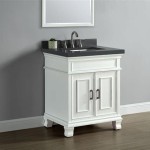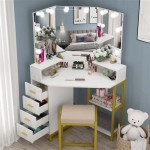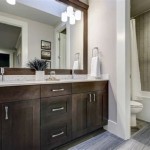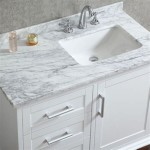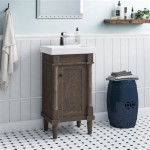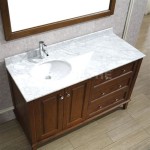Best Material for Vanity Top
A vanity top is the crowning jewel of any bathroom, serving not only as a functional surface for daily routines but also as a key design element. Choosing the right material for your vanity top is crucial, as it will impact the look, durability, and longevity of your bathroom. With a wide array of options available, selecting the best material can be overwhelming. This article will explore some of the most popular materials used for vanity tops, delving into their unique characteristics, pros, and cons.
Natural Stone
Natural stone, such as granite, marble, and quartz, retains its timeless appeal and offers a unique, luxurious look. Each slab is naturally distinct, boasting intricate veining patterns and variations in color. This inherent individuality makes stone vanity tops highly sought-after and adds to the aesthetic charm of the bathroom.
Granite, known for its durability and resistance to scratches and heat, is a popular choice. Marble, while elegant, is more porous and susceptible to staining. Quartz, a man-made stone, combines the beauty of natural stone with enhanced strength and durability. It is also non-porous and resistant to scratches and stains, making it a practical choice for high-traffic bathrooms.
However, natural stone vanity tops come with some drawbacks. They are relatively expensive, require regular sealing, and can be heavy, demanding specialized installation. Moreover, their porous nature necessitates careful maintenance to prevent staining and damage.
Engineered Stone
Engineered stone, often referred to as quartz stone or engineered quartz, is a composite material designed to mimic the look of natural stone. It combines finely ground quartz crystals with resin and pigments, offering a durable and aesthetically pleasing alternative to natural stone.
Engineered stone vanity tops boast superior scratch resistance, stain resistance, and heat tolerance. They are also non-porous, eliminating the need for sealing. These advantages make engineered stone a practical and low-maintenance choice for busy bathrooms. They are available in a wide range of colors and patterns, allowing for customization and design flexibility.
While engineered stone offers numerous benefits, it is not without its downsides. It is generally more expensive than laminate and less forgiving than natural stone when it comes to etching and scratches. Additionally, engineered stone surfaces lack the unique character and natural variations found in natural stone.
Laminate
Laminate, a budget-friendly option, is a composite material consisting of layers of paper or fabric impregnated with resin and bonded together. It is available in various patterns and finishes, offering a wide range of design possibilities.
Laminate vanity tops are relatively inexpensive and easy to install. They are also water-resistant and relatively durable, making them a suitable choice for budget-conscious homeowners. However, laminate is prone to scratching and wear, and it may not be as aesthetically pleasing as natural or engineered stone.
Despite its cost-effectiveness, laminate lacks the natural beauty and durability of stone or engineered stone materials. It can also be susceptible to water damage, particularly around the seams, if not properly installed or sealed.
Solid Surface
Solid surface, a non-porous material often made from acrylic or polyester resin, offers a seamless, smooth surface. It is known for its durability, scratch resistance, and ease of repair.
Solid surface vanity tops are heat-resistant, stain-resistant, and readily repairable. They are also available in a wide array of colors and patterns, offering design flexibility. This material is a good choice for those who want a durable and low-maintenance surface with the ability to seamlessly integrate sinks and other bathroom fixtures.
Solid surface vanity tops are not as hard or as resistant to scratches and stains as engineered stone or natural stone. They may also be more susceptible to heat damage than other materials. While solid surface offers a good balance of durability and aesthetics, it is not as resistant to extreme temperatures or harsh chemicals as some other materials.
Other Materials
Beyond the materials mentioned above, other options for vanity tops include wood, ceramic, and metal. Wood, while elegant, is not ideal for bathrooms due to its susceptibility to water damage. Ceramic is durable but can be brittle and prone to chipping. Metal, while stylish and resistant to water damage, can be cold to the touch and prone to scratches.
The best material for your vanity top ultimately depends on your individual preferences, budget, and the specific needs of your bathroom. By considering the characteristics, pros, and cons of each material, you can make an informed decision that will ensure a beautiful and functional vanity top for years to come.
What Are The Best Materials For Bathroom Vanity Countertops

7 Best Bathroom Vanity Top Materials Which Is For Your Home The Reno Super

Premium Bathroom Vanity Top Materials 10 Ways To Styles Them

7 Best Bathroom Vanity Top Materials Which Is For Your Home The Reno Super
Bathroom Sink Material Ing Guide Signature Hardware

12 Best Quartz Bathroom Countertops In 2025 Marble Com

Granite Vs Quartz A Bathroom Countertop Comparison

12 Best Quartz Bathroom Countertops In 2025 Marble Com
:strip_icc()/102130266-3174ac7d31314c7abfc80a1b65a11dd6.jpg?strip=all)
40 Luxurious Bathroom Countertop Ideas For All Budgets

12 Best Quartz Bathroom Countertops In 2025 Marble Com
